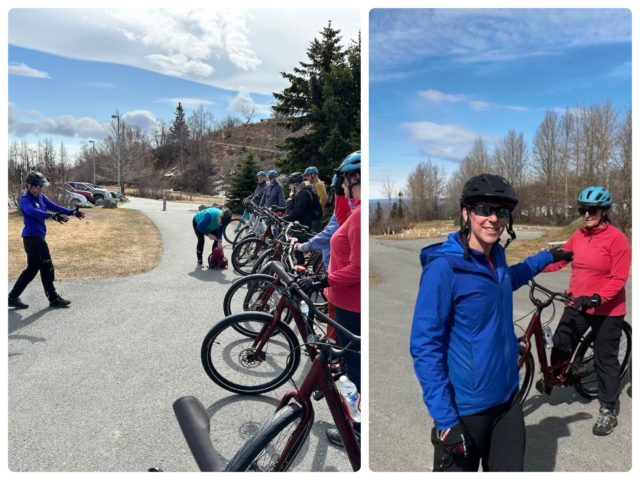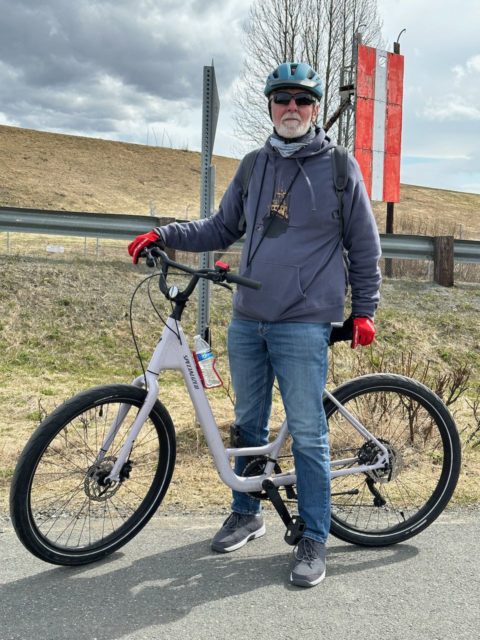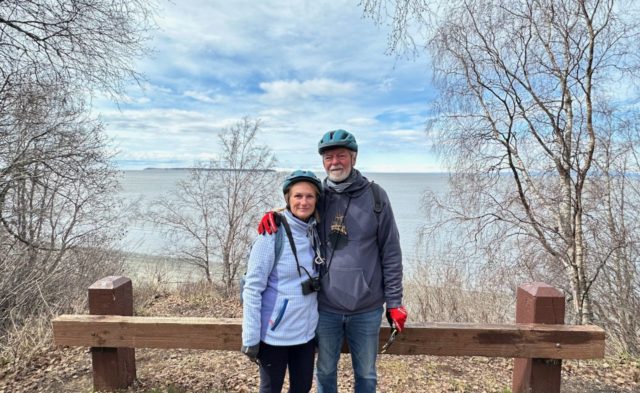May 11
Anchorage is the largest city in Alaska, larger than the smallest state, Rhode Island, with a population of of 288,189 which is 40% of Alaska’s total population. The phrase “urban and wild” is used to describe Anchorage because it is a city set in the midst of incredible natural beauty and wildlife.
The Nieuw Amsterdam spent the previous day and night safely tucked into Kachemak Bay at the lower end of Cook Inlet and arrived in Anchorage late morning on the 11th.


Only two cruise ships will be stopping in Anchorage this season and the Nieuw Amsterdam is one of them. Most ships dock in Whittier (60 miles from Anchorage) or Seward (126 miles over land.) Although Anchorage is an industrial port I was glad that we were right there instead of having to ride busses and trains to get to Anchorage.




Choosing an excursion was a what-if/maybe maybe not exercise in decision-making. You want to do everything but with only 6-8 hours in a port, a decision had to be made. We had selected “Biking the Tony Knowles Coastal Trail” instead of museums or the zoo. It was a good decision because we really wanted to be outdoors and the weather was the best yet.
Tony Knowles Coastal Trail is one of four greenbelt trails located in Anchorage and is named for former Alaska governor Tony Knowles, who served from 1994 to 2002. Kincaid Park, the largest in Anchorage, is home to snowshoe hare, bald eagles, black bear and moose and has 40 miles of walking trails and 20 miles of single-track bike runs. We would be riding over the 11-mile paved trail that looked easy enough for us to do. A van carried the 10 of us, the bikes and our guide, Ellie, out to Kincaid Park.



The bike ride was so much fun. Wonderful views of mountains, marsh regions, mudflats, stands of birches, and patches of snow. The very best part was seeing two moose and so close to the bike path!






Back to the scenery!


The coastal biking path follows Turnagain Arm, the inlet off of Cook Inlet. Turnagain Arm is narrower and has a huge tidal range of 25-30 feet, the second highest tides in North America after the Bay of Fundy.


Mount Susitna, a 4,396-foot mountain, lies 33 miles northwest of Anchorage and is visible from most of Anchorage. The native Dena’ina name is Dghelishla meaning “Little Mountain,” in contrast to Dghelay Ka’a “Big Mountain” which is Denali, the highest mountain peak in North America. Mount Susitna is often called “The Sleeping Lady.”

Native stories say that the lady was engaged to a man who left off to protect their village before they wed. On the day her fiancé left, she promised to wait in the exact spot where he bade farewell. After many nights, she fell into a deep sleep waiting for him. Word came back to the village that the men had been killed. Seeing how peacefully she was sleeping, the villagers couldn’t bare to wake her up so she lay there, asleep and waiting for her love to return.

Our path took us up to the Ted Stevens Anchorage International Airport, also known as the “Crossroads of the World.” It’s location in Alaska is equidistant between Asia and New York. Approximately 80 percent of all cargo flights operating across the Pacific make a stop at Anchorage to refuel, change crews, and sometimes to transfer cargo.





The next stop on the trail was Earthquake Park. On Good Friday, March 27, 1964 the largest and most powerful earthquake in United States. The quake measured 9.2 on the Richter Scale and lasted just under 5 minutes. Massive ground fissures caused landslides in Anchorage (at Earthquake Park) and in Valdez, 300 miles away. Kodiak, Valdez and Seward were most heavily hit by the resulting tsunami. The quake was responsible for 131 deaths.


The van would have taken us back to the cruise ship, but we decided to walk around Anchorage a little bit first. I was determined to find the Ulu Factory

What is an ulu? The ulu knife was the Indigenous People’s main cutting tool. It was originally made from flat, thin, rocks, slate, or even jade. Handles were fashioned out of wood, ivory, or bone and often decorated with distinctive markings of the craftsman.








Ellen Margel Seltzer
I bought several ulu knives and bowls when we were there too! Your pics are wonderful. Made me remember our trip. So glad you had fun.
Gwynn Sterken
I love reading your blog and traveling along with you. Alaska is the last state for us to visit. We were going to go on a cruise for our 50th anniversary, but Covid got in the way. Thanks for sharing your trip.
watsons
GO!
Mary-Jo Shultis
Beautiful, great blog.